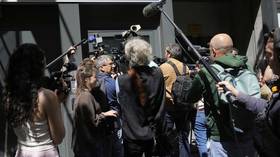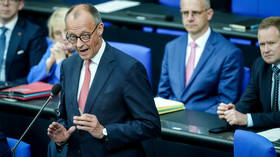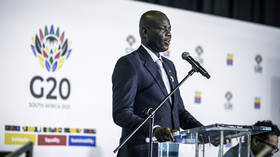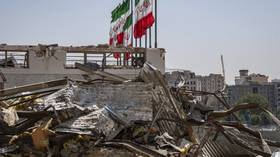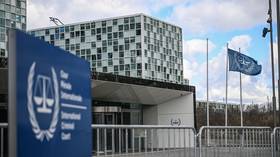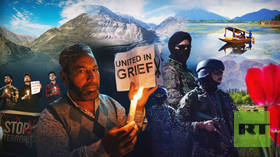Islamophobia or exaggeration? Why Western media is another virus plaguing India during Covid-19 outbreak
As India wages war against Covid-19, it is also facing another kind of pandemic – non-stop attacks from Western media determined to offer simplistic portrayals of events despite the country’s relative success against the virus.
The situation brings to mind a comment made by the late British politician and polymath John Lubbock in the 1800s: “What we see depends mainly on what we look for.” The observation has aged brilliantly, particularly in the context of how today’s mainstream media operates.
True to form, the media has pulled out one of its oldest tools with which to bash India: Islamophobia.
The barrage of articles on Islamophobia in India comes as the country is seemingly doing relatively decently in battling the coronavirus pandemic (despite its population of 1.3 billion) when compared with many Western nations. For instance, while the US has 965,785 reported cases and almost 55,000 deaths, India has reported 27,892 confirmed cases with 872 deaths. It should be noted, however, that numbers everywhere are likely to be higher than the official count.
Also on rt.com Crawl away if you dare? Indian official to be disciplined after cases filed against BABY & 3yo among lockdown violatorsThe fresh accusations of Islamophobia stem from the public outrage that was ignited after a single event held in mid-March by the shadowy, terrorist-linked Islamist organization Tablighi Jamaat (TJ) became a superspreader for the Covid-19 virus. India’s Health Ministry reported on April 18 that 30 percent of coronavirus cases reported in the country thus far had been linked to the TJ’s Nizamuddin Markaz event in Delhi, which went ahead in open defiance of government advisories and a national lockdown aiming to curb the spread of the infection.
A simmering pot
It is true that the fault lines between Hindus and Muslims have been deepening, particularly since the introduction of the Citizenship Amendment Act last December, which fast-tracks the citizenship process for persecuted minorities (including Hindus, Buddhists and Christians) in three neighboring Islamic states – and which was regarded by some as anti-Muslim and sparked protests that turned violent.
There was anger among many Hindus at the sight of trains, buses and public property burning as mobs threw stones and lobbed Molotov cocktails at cops as the media portrayed what was happening merely as peaceful demonstrations. In retaliation, abusive and offensive anti-Muslim posts began appearing on social media.
Then came the Delhi riots, also in response to the citizenship law, which saw the capital burning and 53 lives lost; 36 of them Muslim and 15 Hindu, with two unidentified. Next came the growing threat of Covid-19 and the Tablighi Jamaat event which set religious tensions off once again, prompting more anti-Muslim posts on social media.
Also on rt.com A long lockdown will be catastrophic for developed nations – but a ‘biblical’ disaster for the developing worldIndeed, persecution against Muslims and other minorities in India has happened for decades, but the violence and deaths have never been one-sided. Hindus and Muslims have regularly died in riots. Muslims have been lynched by cow vigilantes, while Hindus have been killed by Muslim cow smugglers. For every mosque brought down by Hindu radicals, one can find hundreds of Hindu temples damaged or destroyed in Muslim-majority Kashmir.
Media steps in with bias
Prominent Western media outlets appear to only assign pieces about India to writers who habitually show the nation in its shabbiest form. The Washington Post recently turned to a usual suspect. Rana Ayyub wrote that the “toxic display” of Islamophobia had found its way into the judicial system when the Tablighi Jamaat congregation was cited by the high court in the Western state of Gujarat as the reason for the growth of the virus outbreak in the country. Should Indian court orders favor the viewpoints of Western journalists? Ayyub went on to unsurprisingly portray the Delhi riots as a one-sided affair, failing to mention the Hindu casualties.
Time magazine writer Billy Perrigo also managed to deftly blank out the Hindu deaths and ignore the violence on the Islamic side, portraying the riots simply as “religious pogroms conducted by Hindu nationalists.”
“Muslims were hardly the only ones gathering in India at the time – yet they have borne a disproportionate amount of nationwide vitriol,”wrote Foreign Policy, in an odd defense of the TJ event.
Meanwhile, the New York Times gave acres of ranting space to Siddharth Varadarajan, who is facing police action for reportedly falsely attributing a quote to Chief Minister of Uttar Pradesh Yogi Adityanath. In the Times, Varadarajan wrote that the Indian media was “vilifying members of the Tablighi Jamaat,” similarly defending the group which has been described by French intelligence services as an “antechamber of fundamentalism.”
Also on rt.com To feel safe, does the world need more weapons or better healthcare? The coronavirus pandemic proves it’s the latterThe theater of lies
The media has employed two clever methods of whitewashing TJ’s remorseless actions while attacking Indians more broadly. First, they conflated criticism of the fundamentalist group with criticism of all Muslims, thereby transforming all coverage of the anger directed at the group into “Islamophobia.” Secondly, by selectively fact-checking fake videos circulating online, the media sought to discredit doctors and health workers who reported that TJ members with Covid-19 had spat at, attacked them and wandered semi-naked around quarantine facilities (which was in fact reported by the BBC).
“If you look closely, there is a pattern to how real cases are being discredited and brushed under the carpet by amplifying false cases,” Swati Goel Sharma wrote in Swarajya.
Of course, a fake video or photograph claiming to be from a particular event does not mean that event did not happen at all. There are ample reports in reliable outlets about the spitting episodes, attacks on health workers, and Tablighis defecating at quarantine centers.
While it is eager to defend TJ at all costs, it has been less interested in reporting how the groups brazen and harmful behavior can have on a scared and mostly law-abiding citizenry. Nor has it been interested in highlighting the crop of TikTok videos urging Muslims to defy basic Covid-19 safety protocols like wearing masks.
Nor does it choose to amplify news of Indian planes traveling to virus hotspots like Wuhan and Islamic countries like Iran and Qatar to bring home Muslim Indians. Ignored too, is the religion-blind service of Indian doctors and nurses to save people – even in the face of attacks and disrespect.
The media sees in India only what it is looking for.
Like this story? Share it with a friend!
The statements, views and opinions expressed in this column are solely those of the author and do not necessarily represent those of RT.





